John Hurrell – 23 March, 2019
As with Bush's earlier work, there is a lot of humour. We see Greek fishermen smoking cigarettes and holding slingshots; dogs with lit sticks of gelignite clenched in their jaws; flying birds with men draped over them; other men with strange objects like tortoise shells, baskets or brains bound to their bodies or replacing their hair; bird-catchers wearing watches; men on fire sedately floating through furnaces.
This show represents a big change for Kushana Bush; a successful one for an artist greatly admired for her colourful and humorous images of multi-racial crowds participating in a jumble of varied activities, often with erotic preoccupations. A much smaller chromatic range, with less push and pull spatially-no longer with unpredictably coloured garments inserted into the narrative-has taken over.
Now there’s greater graphic unity, a powerful simplicity (through two tones only) with more direct control over decorative rhythms. There is a different type of intensity: a graphic quality that references Greek vases and exploiting negative space; plus a sense of German Gothic angular stylisation reminiscent of Leo Bensemann’s graphic work.
To do this Bush uses a grey-black watercolour base with brushed-on layers of pale gouache (using one or two tones of pale blue; sometimes also two tones of white for detail and accentuation) to make positive shapes by painting around forms, plus an extraordinarily sensitive fine line rendered with a single-hair brush.
In images like Snake Charmers or Bird Parable the interaction between Bush’s sensitive meandering line and her orchestrated arrangement of shapes is enthralling. She seems more in control now of her formal elements—and their spatial consequences—than ever before. The image components are more interlocked; tighter.
Entitled Antique Electric, the show mixes Classical Homeric narratives, images of warfare, domesticity, gathering food such as plants, fish or geese, and the coloured blue sparks of electricity. The formal musicality and inventiveness is what appeals.
Plus, as with Bush’s earlier work, there is a lot of humour. Among the many incongruities we see Greek fishermen smoking cigarettes and holding slingshots; friendly dogs with lit sticks of gelignite clenched in their jaws; flying birds with men draped over them; other men with strange objects like tortoise shells, baskets or brains bound to their bodies or replacing their hair; bird-catchers wearing watches; men on fire sedately floating through furnaces; geese in wheatfields with hovering milkshakes, cellphones and bottles of beer.
Presented in rows, or cross formations, Bush‘s satirical images have unusual flat frames that look like opened-up shallow boxes. They project out from the sides with negative indentations in the corners, and are black and shiny. They are highly eccentric, and definitely seem an improvement on conventional framing.
This is an excellent show, and while Bush can at times lapse into Beryl Cook-like cuteness with three-quarter viewed heads that have spaced apart eyes, the overall tonal simplicity and vaguely Beardsley-like graphic keeps the mood historic and not over flippant—it remains entertaining, but not ingratiating.
John Hurrell
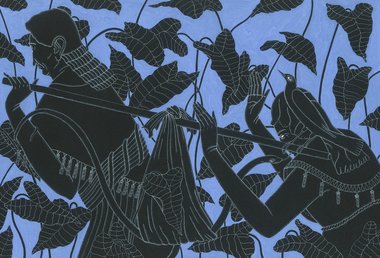
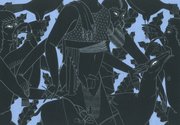
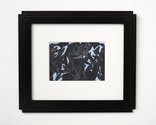
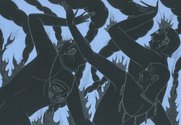
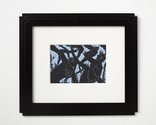
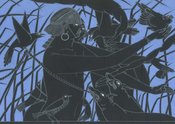

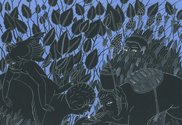
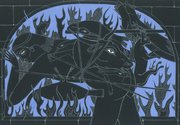
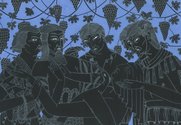
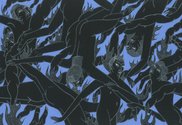
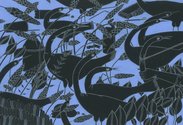
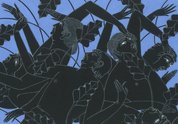
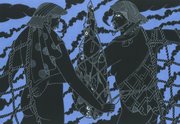

 Two Rooms presents a program of residencies and projects
Two Rooms presents a program of residencies and projects Advertising in this column
Advertising in this column



This Discussion has 0 comments.
Comment
Participate
Register to Participate.
Sign in
Sign in to an existing account.